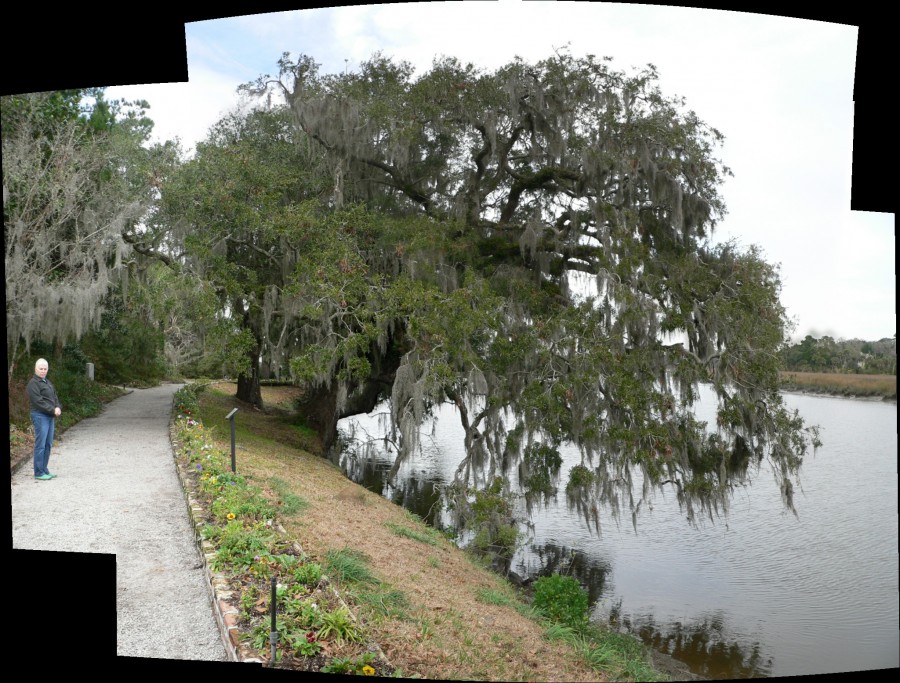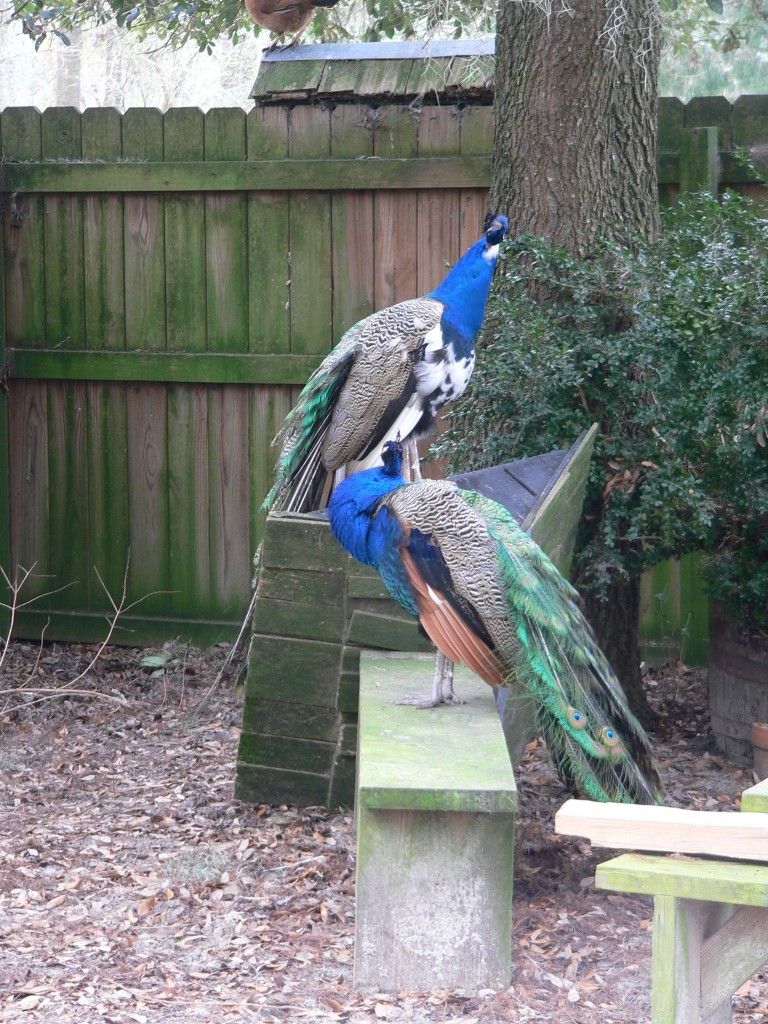
Magnolia Plantation was initially a rice farm. Rice was loaded on large flat-bottomed boats and taken down the river on the rise of the tides.
Its gardens were opened to the public shortly after the Civil War. Today it includes over 70 acres of gardens. A few camellias and hyacinths were in bloom at the time of our visit, but the main attraction is strolling the garden paths admiring the trees and shrubs.
Live oaks border the Ashley River, dripping with Spanish moss.
The “moss” is actually an epiphyte, which lives on nutrients from the air and rainwater. It doesn’t harm the tree and it is more prevalent on hardwoods than softwoods. Legend has it that the name came from the beards worn by Spanish explorers. They must have had awfully scruffy beards!
The moss looks very strange on this flowering apricot tree.
Magnolia also has a small petting zoo, with miniature horses and a group of peacocks. On our drive in, a peacock crossed the road in front of the RV. Another visitor got out of his car and tried to herd the peacock until his wife could get a nice photo. Peacocks don't seem to follow directions very well.
Beaker and Bunsen said “Why are you looking at that fancy chicken? We are the pretty birds!"
A common tree on the property is the bald cypress. It was thought that since swamp trees grow in and around water, it produces little protrusions from the roots so it can breathe. This, however, has been proven false leaving their purpose a mystery.





